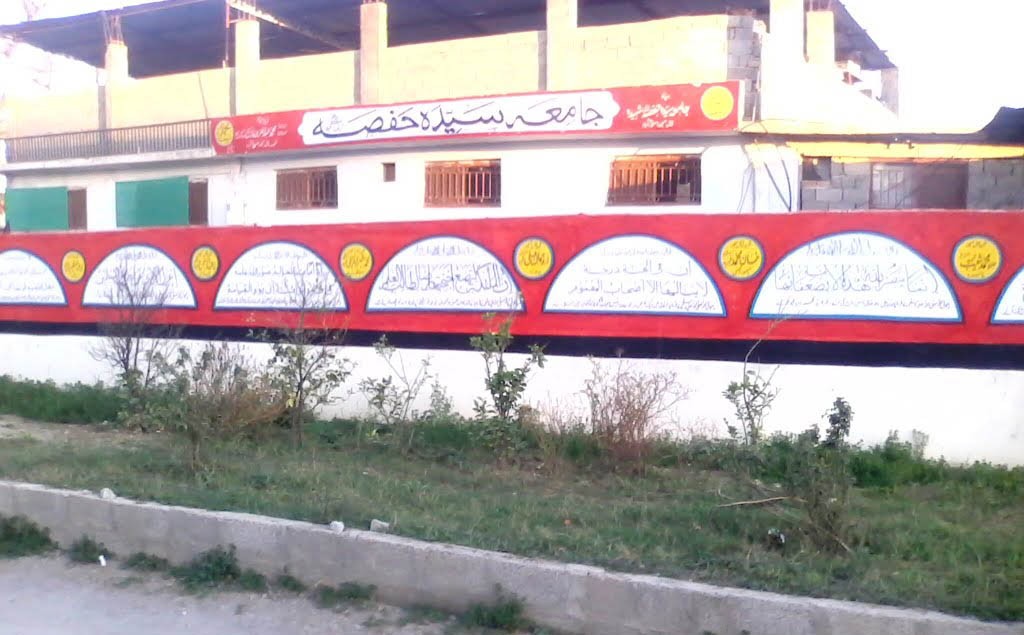
The capital is known for its mosques and madrassas built on encroached lands. But these are too sensitive to tackle

When the Greek town planner, Constantinos A. Doxiadis, designed Islamabad in the late 1950s, he surely had in mind the capital of a new nation liberated just a decade ago.
The town planners of Islamabad very beautifully designed all residential and commercial centres and green patches, providing facilities to live, trade, pray, and picnic.
Over a half century later, today Islamabad is infested with encroachments and is at the mercy of land grabbers. Unfortunately, religion is also recklessly exploited for these illegal encroachments and land grabbing.
Illegal inhabitants unlawfully encroached upon the public land. Traders, land mafias, and timber mafias have also encroached upon several parts of the capital and greatly distorted and mutilated its design.
The self-acclaimed pious segments of the society -- the prayer leaders and mosque managers -- have built mosques and religious seminaries on encroached lands.
According to an official estimate, Islamabad houses over 230 illegal mosques in its municipal territory, and there are many more seminaries attached to these mosques. Many of these unlawful mosques have been built in the green belts, commercial centres, and residential areas of the federal capital.
Islamabad, which has been declared as the second most beautiful capital of the world, saw its worst law and order situation in 2007 because the administration of a mosque-cum-seminary had illegally occupied a children’s library adjacent to its walls and demanded the government to hand it over to them. The military had to take action to get the illegally constructed seminary as well as the children’s library adjacent to it vacated.
The administration of the same mosque destroyed a large portion of a forest in the Margalla hills in Sector E-9 where they removed a large number of trees to build its seminary, Jamia Faridia, claimed to be one of the largest seminaries in Pakistan.
This seminary was built during General Ziaul Haq’s regime under full official cover because the authorities were under awe of its cleric Maulana Muhammad Abdullah. The management of Jamia Faridia, however, continued extending this seminary by regularly cutting trees in the forest and are known to be doing it even today.
Though this particular administration of seminaries and mosques came under government attack for a brief time after General Musharraf ordered a crackdown on Lal Masjid, they started encroaching on the government and public land as soon as Musharraf stepped down.
The female branch of this seminary, Jamia Hafsa, which had been illegally set up in the seminary attached to the Lal Masjid, has encroached on a vast land in the heart of Islamabad in sector G-7 where they have built a temporary shelter on the brink of a water channel and gradually occupied the whole area by constructing a huge complex.
This complex is also used as a camp office of Jamia Hafsa’s chairperson, Ume Kalsum, and her husband, Maulana Abdul Aziz, who escaped from the Lal Masjid during military operation in a burqa.
Besides the Lal Masjid group, many other religious groups are engaged in a campaign of spreading their mosques’ networks in the new sectors of Islamabad and build a mosque and madrassa wherever they find a place.
A few months ago, Jamat-ud-Daawa captured a mosque claimed by another group and both these groups came face to face, narrowly escaping a bloody clash.
Many illegal mosques have been regularised by the Capital Development Authority and other official departments under pressure.
One such mosque was built in the main commercial district of Islamabad’s Blue Area, which was initially a temporary shelter arrangement for prayers on a piece of land specified for parking but now has become a large concrete structure which matches any high-standard commercial plaza in the area in quality of construction and decoration.
The Capital Development Authority (CDA), which is responsible to dismantle illegal structures and encroachments in Islamabad, says there are several reasons for its inaction against the illegal mosques.
"Sometimes there are elements behind the scene who force the authorities to deal with it tactfully," says Ramzan Sajid, a spokesman for CDA.
"Besides, this mosque issue is a sensitive one. There are legal issues as well. Many a time, people take the cases related to encroachments to the courts which stop the CDA from dismantling illegal structures at least for some time. This encourages the encroachment mafia."
"But still we take action against illegal occupations wherever we have to. Recently, we have dismantled two rooms of Jamia Hafsa in G-7. We also dismantled five illegal mosques in sector I-11 because the court had given permission to act against illegal settlements there," he says.
Civil society leaders allege that the administration fears backlash to take action against illegal mosques. "They had taken action against a mosque once and you have seen the result. The mosque administrators had become violent when government authorities tried to vacate the Red Mosque," says Zafarullah Khan, Executive Director, Centre for Civic Education.
"The cost of acting against religious lobby is too much. They have their own web. Then there is also a soft corner for religion related issues," he says.
"The only solution to this problem is to regulate it. If a person is required to obtain a licence to open even a small kiosk, why then is there no licence for building a mosque? Mosques should be regulated and not be privately owned by any means," suggests Khan.